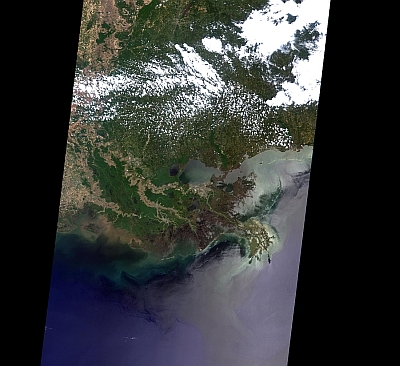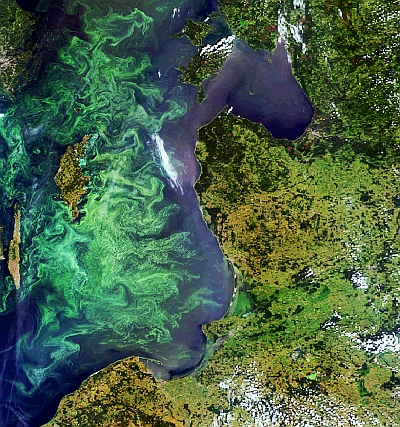Supplement 3.3: Eutrophication
What is Eutrophication?
Nutrients such as nitrogen and phosphorus are essential for maintaining primary production and thus the healthy structure and functioning of aquatic ecosystems.
This enhanced plant growth, often called an algal bloom, reduces dissolved oxygen in the water (anoxia). This can kill other marine life which also depend on disolved oxygen in the water.
What causes eutrophication? - Sources of nutrients
In north-western Europe and the Danube river catchment, 50-80% of the total load of nitrogen originates from diffuse pollution from agricultural run-off (EEA 2005).

Source: NASA
The main sources of phosphorous used to be industry and household wastewater. However, due to legally enforced reductions in point-source discharges since the 1980s, in some countries agriculture has also become the main source of phosphorous contribution to the Eropean seas (EEA 2007).
